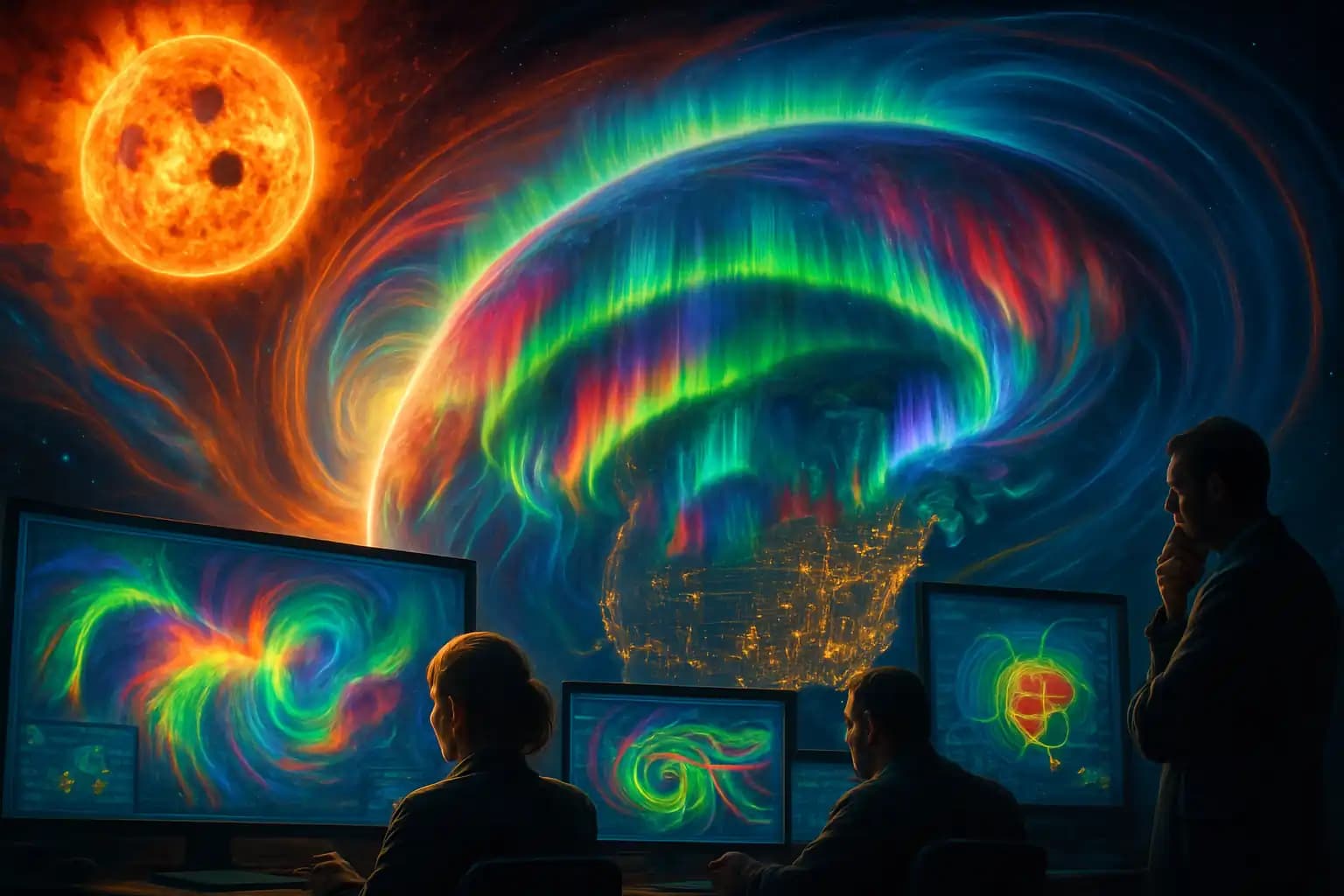Space weather recently made headlines—not quietly, but with a magnetic punch. In under two days, Earth’s magnetic field experienced disruptions from two high-speed solar wind streams. The second stream brought a co-rotating interaction region (CIR) that had space physicists and doomsday preppers rushing to check aurora forecasts. Many wonder if this is only a flashy display or a warning for our increasingly vulnerable, electrified world.
On May 24, as solar activity lay dormant, forecasters such as Stefan Burns noted planetary geometry and the upcoming “Mercury Cazimi” as signs of possible disruption. Fast-forward to May 29-30, when a G3-level geomagnetic storm struck, illustrating how quickly the right planetary alignments and solar physics can create chaos in Earth’s upper atmosphere. With another forecast anticipated for June 21, conversations around planetary geometry and high-speed streams have shifted from obscure to urgent.
How Solar Wind and CIRs Trigger Geomagnetic Turbulence
So, what turned Earth’s magnetic shield into a cosmic punching bag? The answer is simple: fast solar wind streams impact slower flows, generating CIRs—massive plasma structures that traverse the inner solar system. As detailed in the University of Sydney’s resource and CIR Wikipedia entry, these regions disturb the solar wind, heightening the likelihood of geomagnetic storms when they connect with Earth’s magnetic field.
This celestial jolt can spark auroras at unexpected latitudes, disrupt radio and radar communication, and, in severe cases, damage satellites and power grids. Such threats are familiar to anyone who follows breakdowns due to sudden global outages or studies grid vulnerabilities related to man-made or cosmic interference.
The G-Scale: Measuring Threats from Moderate to Super-Storm
How do we measure solar fury? The Wikipedia entry on geomagnetic storms explains that the NOAA G-scale ranks storms from G1 (minor) to G5 (extreme). This ranking relies on magnetometer readings (the disturbance storm time, or Dst index) and the K-index. G3-level storms don’t threaten civilization, but they can disrupt satellite operations, navigation, and radio communication, causing voltage alarms on power grids.
The largest geomagnetic event—1859’s Carrington Event—set telegraph offices ablaze and produced auroras as far south as the Caribbean. More recent events, like the 1989 Quebec blackout, melted transformers. Each incident reminds us of how dependent our technology is on a calm sun. Our modern digital infrastructure is fragile against old-school cosmic forces, making risk analysis and blackout preparedness (as explored in this gripping energy crisis analysis) vital.
Astrology vs. Astronomy? Planetary Geometry and Space Weather Forecasting
Some space weather enthusiasts wonder if planetary alignments—such as grand trines or crosses—can predict magnetic storms. While mainstream science examines solar wind, sunspot cycles, and CME frequency, the ancient practice of interpreting celestial signs continues. Stefan Burns’s blend of geophysics and planetary geometry reflects a trend of hybrid forecasting, blurring boundaries between astrology and astrophysics.
For skeptics, NASA and established observatories provide reliable forecasts. Yet, precise predictions of events like the G3 storm spark curiosity about whether gravitational influences or “critical alignments” can enhance the complex puzzle of space weather prediction. Similar hybrid approaches appear in cutting-edge AI forecasting and secretive tech uncovered in astounding blackmail-resistant AGI claims and discussions of underground military science labs.
Impacts on Earth: From Power Grids to Everyday Life
Geomagnetic storms extend beyond the exosphere and affect daily life. Airlines reroute flights, mariners lose compass accuracy, and satellite operators scramble to update software. Long-duration or intense storms can generate geomagnetically induced currents (GICs) in transformers, risking blackouts and infrastructure damage. This poses serious problems for already strained systems, especially as modern conveniences from heating to social media depend on electrical stability.
These vulnerabilities have led to contingency plans involving governments, utility companies, and private citizens. Those who followed doomsday exposés and news on the fragility of society understand the stakes. If a Carrington-class event occurred today, as discussed in detailed solar flare breakdowns, billions could face weeks without power, navigation, or communication.
In this era of relentless solar storms, preparation is crucial. For insightful analysis and tips on resilience against space weather, visit Unexplained.co—where the only blackout you’ll face is choosing which disturbing scenario haunts you the most.





